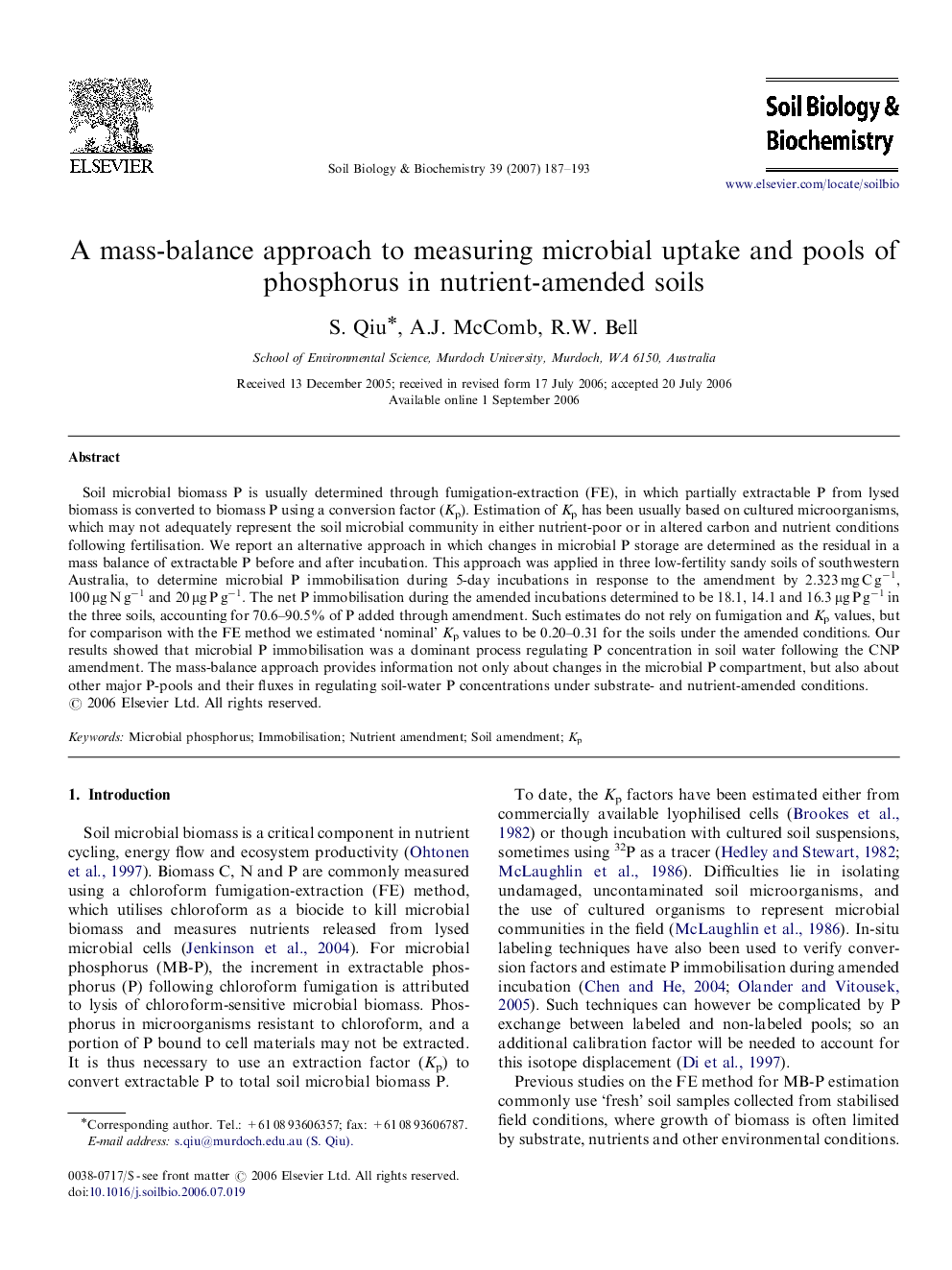| Article ID | Journal | Published Year | Pages | File Type |
|---|---|---|---|---|
| 2025878 | Soil Biology and Biochemistry | 2007 | 7 Pages |
Soil microbial biomass P is usually determined through fumigation-extraction (FE), in which partially extractable P from lysed biomass is converted to biomass P using a conversion factor (Kp). Estimation of Kp has been usually based on cultured microorganisms, which may not adequately represent the soil microbial community in either nutrient-poor or in altered carbon and nutrient conditions following fertilisation. We report an alternative approach in which changes in microbial P storage are determined as the residual in a mass balance of extractable P before and after incubation. This approach was applied in three low-fertility sandy soils of southwestern Australia, to determine microbial P immobilisation during 5-day incubations in response to the amendment by 2.323 mg C g−1, 100 μg N g−1 and 20 μg P g−1. The net P immobilisation during the amended incubations determined to be 18.1, 14.1 and 16.3 μg P g−1 in the three soils, accounting for 70.6–90.5% of P added through amendment. Such estimates do not rely on fumigation and Kp values, but for comparison with the FE method we estimated ‘nominal’ Kp values to be 0.20–0.31 for the soils under the amended conditions. Our results showed that microbial P immobilisation was a dominant process regulating P concentration in soil water following the CNP amendment. The mass-balance approach provides information not only about changes in the microbial P compartment, but also about other major P-pools and their fluxes in regulating soil-water P concentrations under substrate- and nutrient-amended conditions.
